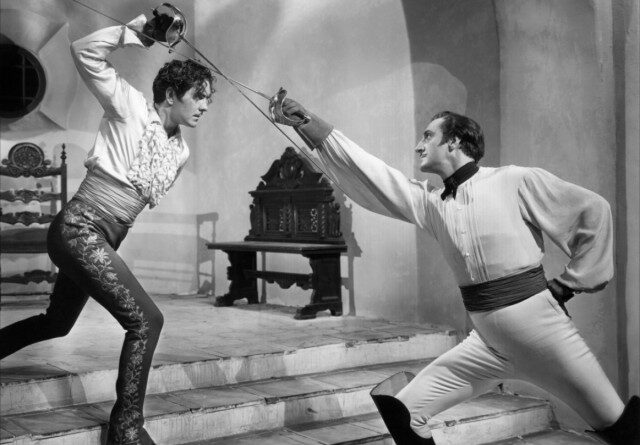How Expensive Is Fencing Sport
Understanding the Basics of Fencing
Before we delve into the costs, it’s essential to have a basic understanding of fencing. Fencing is an Olympic sport with three primary disciplines: foil, epee, and saber. Each domain has its own rules and requires specific equipment. Fencers aim to score points by touching their opponent with their weapon’s tip while defending against attacks. The sport demands agility, precision, and quick thinking, making it both mentally and physically challenging.
Fencing Equipment: The Foundation of the Sport
Weapons and Blades
Fencing begins with the acquisition of the fundamental tools: the weapons. Each discipline has its weapon type: foil, epee, and saber.
- Foils are generally the least expensive of the three, with beginner foils costing around $30 to $50. Advanced foils with higher-quality materials can range from $100 to $300.
- Epee: Epee weapons tend to be a bit pricier, starting at around $50 for beginners and up to $400 or more for advanced models.
- Sabre: Sabre blades typically fall within the same price range as epees, with beginner sabers costing around $50 and advanced options exceeding $400.
Remember that the prices may vary depending on the brand, material, and craftsmanship.
Protective Gear
Safety is paramount in fencing, so investing in protective gear is crucial. The essential items include:
- Fencing Mask: A quality fencing mask is vital and can cost anywhere from $50 to $200 or more.
- Fencing Jacket: Fencing jackets provide protection for the torso and can range from $50 to $200.
- Gloves, Plastrons, and Knickers: These additional protective items cost around $100 to $200.
Additional Equipment
In addition to the essentials, fencers often invest in equipment such as bags, body cords, and grips. While these items may not be mandatory, they enhance convenience and performance. Expect to spend another $100 to $200 on these accessories.
Membership and Training Costs
Now that we’ve covered the essential equipment, let’s focus on the costs associated with training and participation in fencing.
Club Memberships
Joining a fencing club is essential for both beginners and experienced fencers. Club memberships vary widely depending on location and club reputation. In the United States, for instance, annual fees can range from $200 to $600 or more. These fees often include access to coaching, practice facilities, and club-specific events.
Coaching Fees
Having a skilled coach is invaluable in fencing. Private coaching sessions can cost anywhere from $40 to $100 per hour, depending on the coach’s experience and location. Group lessons are more affordable, averaging around $20 to $50 per hour.
Competition Fees
Competing is an integral part of fencing, and tournament participation comes with its expenses. Entry fees for local games may be relatively modest, ranging from $20 to $100. However, national and international competitions can be considerably more expensive, with entry fees exceeding $100 and additional travel and accommodation costs.
Maintenance and Replacement
Fencing equipment, like any sports gear, requires maintenance and occasional replacement.
Blade Maintenance
Fencing blades wear out over time due to repeated use. The cost of blade maintenance can vary depending on whether you choose to re-tip or rewire the edge yourself or seek professional services. It can cost $10 to $30 per blade for re-tipping and rewiring.
Equipment Replacement
Equipment replacement is another factor to consider. Masks, jackets, and gloves have a finite lifespan, especially with regular use. Be prepared to replace these items every few years, which can add up to several hundred dollars in expenses.
Travel Costs
You’ll likely travel to various tournaments and events as a competitive fencer. Travel costs can vary widely depending on your location and the frequency of your participation in competitions. Budgeting for transportation, accommodation, and meals is essential when attending events away from your home base.
Summing It All Up
Now that we’ve broken down the costs associated with fencing, it’s evident that pursuing this sport can be a significant financial commitment. Let’s summarize the critical expenses:
- Equipment: Depending on the quality and type of gear you choose, you can expect to spend anywhere from $200 to $1,000 or more initially.
- Club Memberships: Annual fees range from $200 to $600 or higher.
- Coaching Fees: Private coaching sessions can cost between $40 and $100 per hour.
- Competition Fees: Entry fees for tournaments range from $20 for local events to over $100 for national and international competitions.
- Maintenance and Replacement: Budget for blade maintenance, equipment replacement, and occasional repairs, which can cost up to a few hundred dollars annually.
- Travel Costs: Expenses related to attending tournaments can vary significantly but should be factored into your overall budget.
Tips for Managing Fencing Expenses
While the costs of fencing may seem daunting, there are ways to manage your expenses effectively:
- Start with the Basics: As a beginner, invest in quality essentials but avoid unnecessary accessories until you’re more experienced.
- Shop Wisely: Look for deals and discounts when purchasing equipment. Online retailers often offer competitive prices.
- Consider Used Gear: Fencing equipment can be found secondhand, which can significantly reduce your initial investment.
- Take Advantage of Club Benefits: Many fencing clubs offer equipment rentals or discounts for members, which can save you money.
- Set a Budget: Create a monthly or annual budget for all fencing-related expenses, including equipment maintenance and travel costs.
- Seek Sponsorship: If you reach a competitive level, explore sponsorship opportunities to offset costs.
In Conclusion
Fencing is undeniably an exhilarating sport that combines physical prowess with mental understanding. While it comes with its share of expenses, investing in fencing can be advantageous. By understanding the costs involved and budgeting wisely, you can confidently embark on your fencing journey.
Remember, the expense of fencing is an investment in your physical fitness, strategic thinking, and personal growth. So, if you’re passionate about the sport, don’t let the costs deter you from pursuing your fencing dreams. With the right approach, fencing can be accessible and fulfilling for individuals of all ages and backgrounds.




